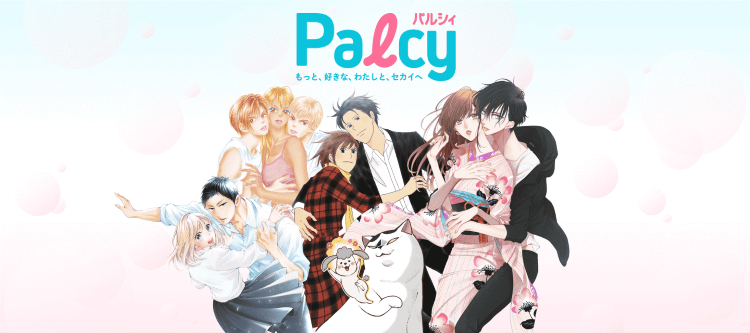男子からの肯定だけじゃ足りない!少女マンガから紐解く「女の子の欲しいもの」
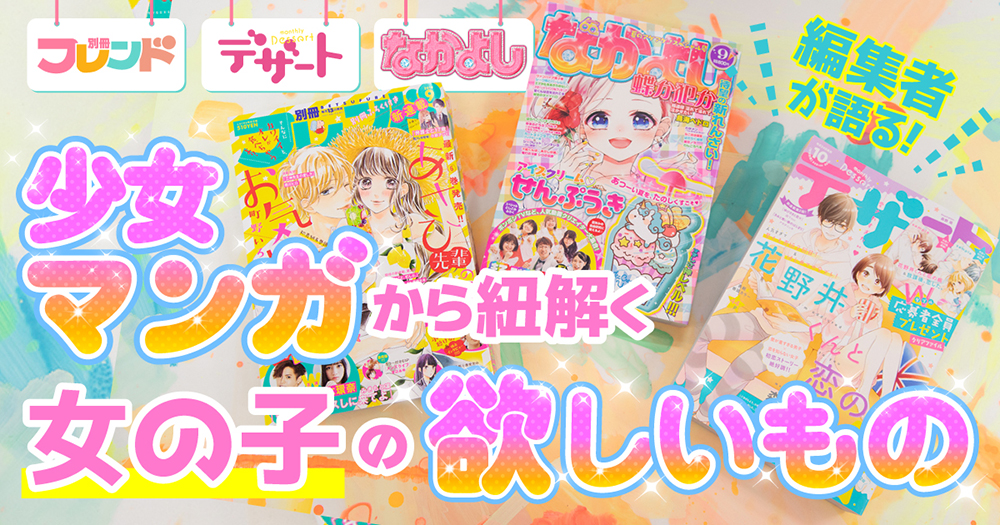
構成/和久井香菜子
少女マンガは「溺愛もの」ブーム?
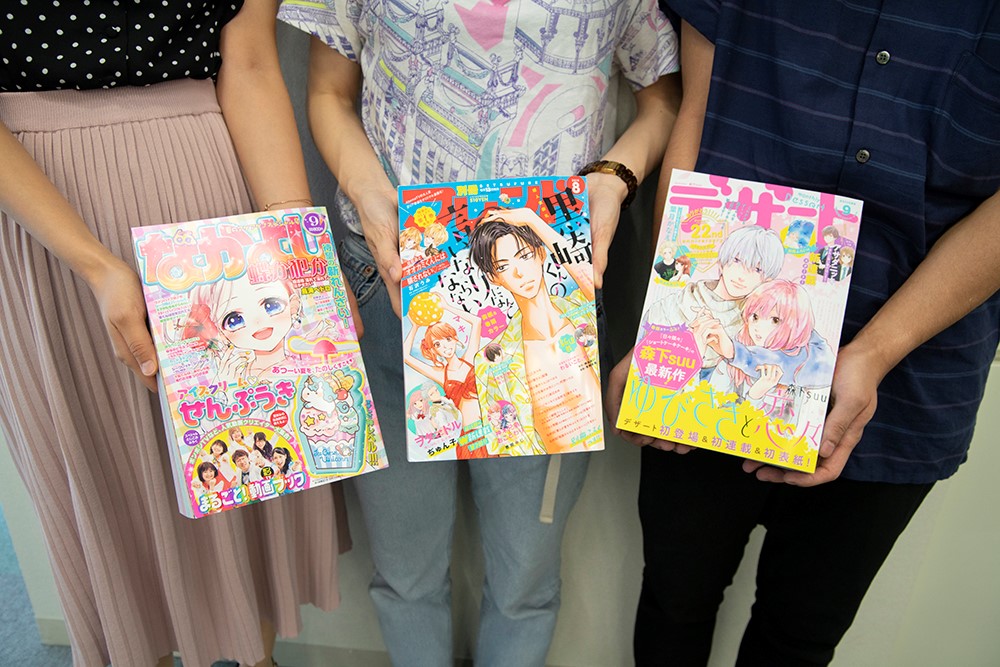
── 3誌の読者対象を教えてください。
松原(なかよし):『なかよし』は小学4年生から6年生がメインで、中学1・2年ぐらいまでです。今『カードキャプターさくら クリアカード編』を連載しているので、ちょっと大人のかたも買ってくれていますね。読者は比較的お勉強ができて、でもマンガ好きになってくタイプの子が多いのかなという印象です。
水垣(別フレ):『別冊フレンド』は10代の女の子をターゲットにしています。方針は「恋に恋しちゃう雑誌」。恋にあこがれている女の子が読んでワクワクするような作品が多いですね。もちろん、30代でも40代でもそういう人はいると思います。年齢問わず、読むと元気になって「恋しちゃうぞ!」みたいな気持ちになるのが雑誌のイメージですね。
前田(デザート):『デザート』は、1度は恋をしたことがある人たちをターゲットにしています。よく『別冊フレンド』と並べて“事前・事後”っていうんですけど……。
雑誌として掲げているのは「人生が変わる瞬間」。女の子の人生が変わる、1番大きな理由のひとつは恋だろうという前提で、それを経たことのある人が想定読者です。高校生や大学生の、よりリアルな部分をテーマにした作品が多いです。
── 人気になる作品の共通点はありますか?
松原(なかよし):『なかよし』だと、男子がとにかくイケメンです。基本的には溺愛もので主人公がとにかく愛される。
その一方で、小学生が働いてお金を稼ぐっていう『秘密のチャイハロ』のようなサバイバル的なものも人気です。
水垣(別フレ):恋への夢が膨らむ作品としては、「憧れの男性との恋」を描いた作品でしょうか。
今度映画にもなる『午前0時、キスしに来てよ』は、まさに超トップ芸能人とJKが恋しちゃう作品です。『黒崎くんの言いなりになんてならない』の黒崎くんも、黒王子と呼ばれ、めちゃめちゃ運動もできて勉強もできる御曹司という、学校で1番かっこいい憧れの人です。『PとJK』の功太くんは、身近にいそうで、でも実は手の届かない「大人男子」ですね。
全体的な少女マンガのトレンドなので「溺愛」もありますが、「愛されかた」よりは、キャラに重きを置いている作品が人気です。
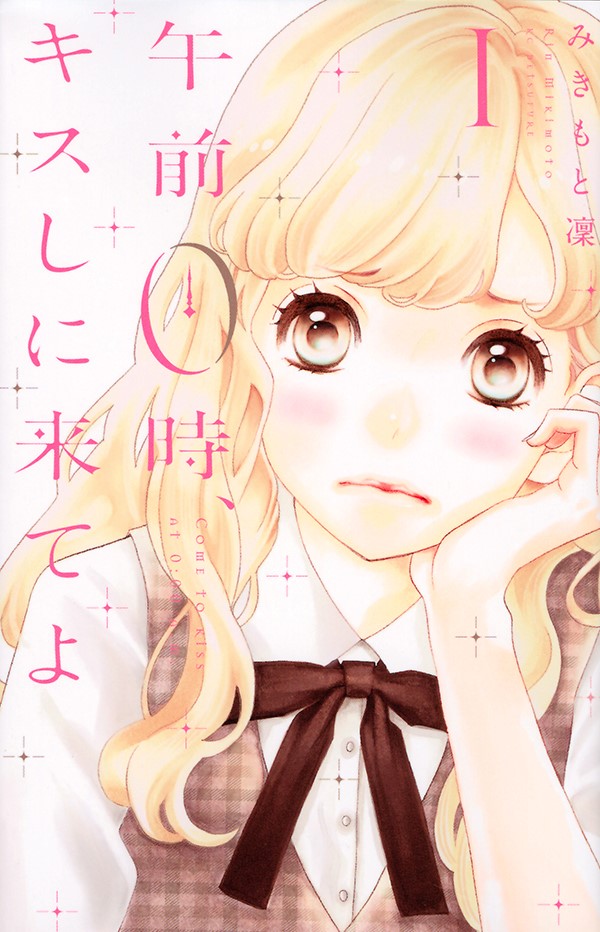
前田(デザート):『デザート』編集部でよく言ってるのは「小さな大事件」。「当たり前のことがすごく素敵に思える!」ということが、しっかりと描かれているものが強いです。『花野井くんと恋の病』は、とことん愛してくれる男の子が相手なんだけど、描かれる出来事は、カップルが普通にするようなことなんです。
「こんな人に会いたかったな」とか「こんな人と恋をしたらこうなるのかな」とか「愛されるにはこうしたらいいのかな」とか、男女が影響しあうマンガが人気でしょうか。「すごい人に恋された」だけではなく「私の言動がこんなふうに影響するとうれしい」といった双方向から恋が描かれている印象です。
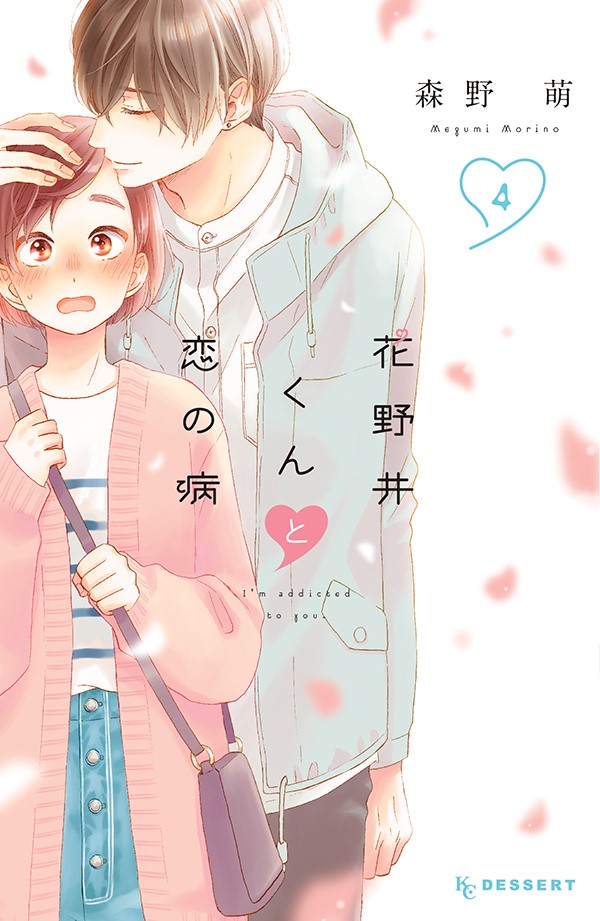
『花野井くんと恋の病』(森野 萌/講談社)
溺愛ものと相性がいい「極道」
── チャレンジだった作品はありますか?
水垣(別フレ):極道の孫娘と若頭の物語『お嬢と番犬くん』や、プロレスラーとJKが恋する『プ女と野獣』です。男性キャラが若干現実離れしてる設定なのと、主人公より10歳以上年上なんです。大人になると10代の気持ちってわからなくなっちゃうんで、編集部では「JKにとっては25歳以上ってめっちゃおじさんじゃないか」「こういう男の人を出したらかっこ悪いって思われるかな」って心配もありました。「年上って言っても23歳ぐらいが限界じゃない?」って。でも反感を買ったり「こんなおじさんと恋愛するなんてキモい」とは言われたりしなかったので、そこは大丈夫なんだなって思いました。
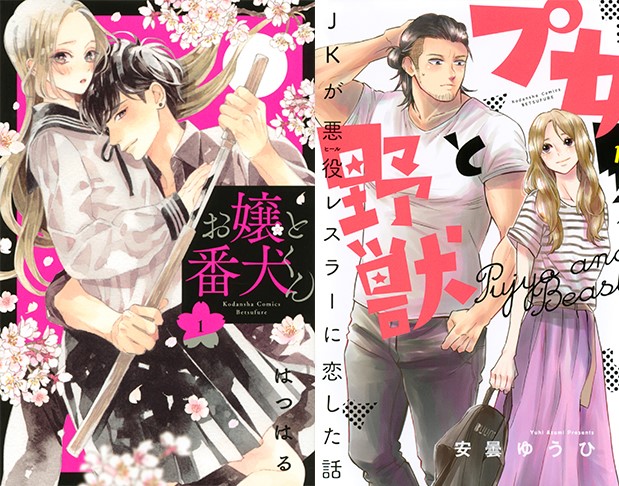
『お嬢と番犬くん』(はつはる/講談社)
『プ女と野獣 JKが悪役レスラーに恋した話』(安曇ゆうひ/講談社)
助宗:たしかに、最近の作品には「こんな男の人もいるよ」感がありますよね。プロレスラー、警察官……学校以外にも男性がいて、恋愛の対象になるかもしれないみたいな。
水垣(別フレ):同級生の男の子って女の子より子供っぽかったりするから……。「もっと素敵な人はいっぱいいまっせ」みたいな(笑)。
── 職業といえば、最近、極道もの多くないですか? TLにすごく多い。
松原(なかよし):極道は溺愛ものとの親和性がありますよね。力を持ってるから。
助宗:組織に対する一途さと女性に対する一途さをリンクさせて、一途なキャラクターとして描かれることが多いですね。
松原(なかよし):戦って護ってくれるしかっこいい。
水垣(別フレ):マンガを読んでる女の子たちは、少年マンガも読んでいることが多いので、腕っぷしが強い人に憧れはあるでしょうけど、現実にはいないですよね。披露する場所もないし。でも極道って暴力にちょっと近い場所にいるから、腕っぷしの強さを示すチャンスがマンガ的にはある。
松原(なかよし):生きるか死ぬか。「命の危険があるから、次会えないかもしれない!」ってスリルがある。
水垣(別フレ):西洋が舞台よりも現実的で、妄想しやすくて、でも絶対現実にはない新しい形のファンタジーですね。
助宗:「てっぺんを取る」っていうロマンがありますよね。それでいうと王宮ものもありますが。現実だと「社長になる」?……なんとなくスケールが小さくなっちゃう。極道のてっぺんが組長なのかわからないけど、なにかしらの組織を上っていくって体感もありますよね。
前田(デザート):食物連鎖のトップみたいなね。そのてっぺん取ったうえで「おまえとの時間が1番だ」みたいな。
助宗:溺愛ブームと絶対関連してますよね。今の溺愛とは関係ないけど、極道の妻みたいな分野はむかしからあったから、想像しやすいですよね。
前田(デザート):僕、今ちょうど極道ものを準備してるんですけど、『なかよし』みたいな子ども向けでやるのはチャレンジングな部分もあるだろうなと思いました。
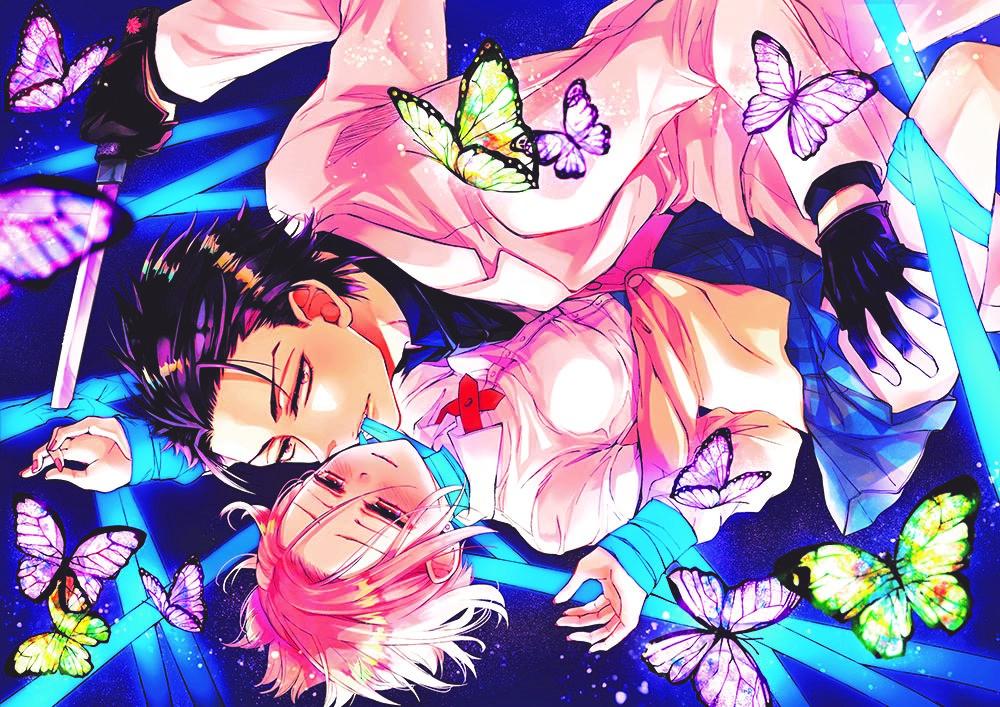
『蝶か犯か 〜極道様 溢れて溢れて泣かせたい〜』(鳥海ペドロ/講談社)
松原(なかよし):『蝶か犯か 〜極道様 溢れて溢れて泣かせたい〜』ですね。ぎりぎりのところを探っていくことになるかと思いましたが、良い結果を残せているので力を入れております。
── PTA的には大丈夫なんですか?
男の子の「これでいいんだよ」じゃ、足りない
── 人気のヒロイン像はありますか?
松原(なかよし):『なかよし』はすごくわかりやすくて「強くてかわいい」です。溺愛ものだとしても、女の子は基本的に強いんですよ。ときには男子よりも強い。キャラクター総選挙をやると、男子キャラじゃなく女子キャラのほうが上位に上がってくるんですよね、『なかよし』特有かもしれないですけど。普通の女の子が自分を投影して、こうなりたいっていうのが、『なかよし』が描いていくべきヒロインなのでしょう。
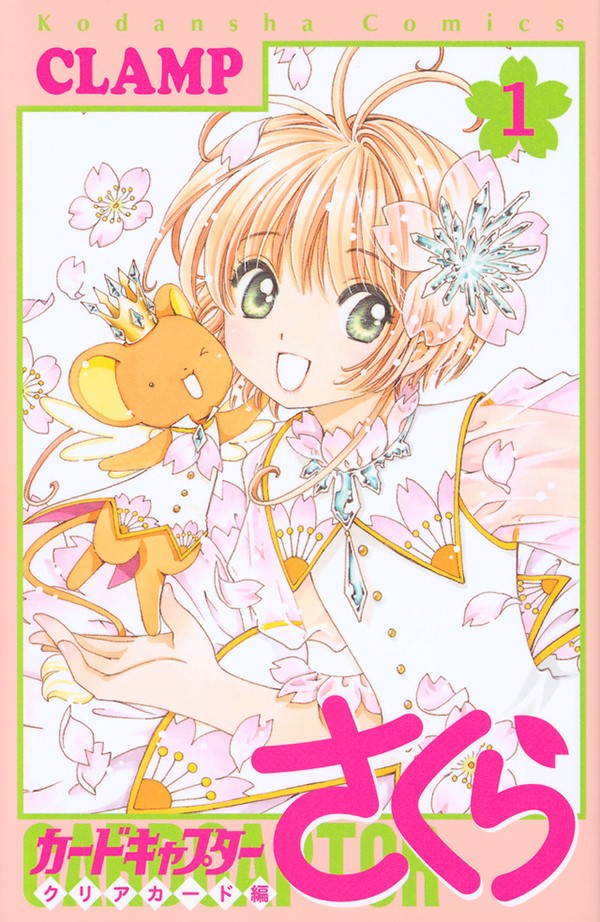
『カードキャプターさくら クリアカード編』(CLAMP/講談社)
水垣(別フレ):『別フレ』は「前向きに恋をがんばってる普通の女の子」ですね。告白するかしないかでウジウジしてる物語ではないです。あこがれの男の子を射止めるためにちゃんと前向きに行動できる女の子が多いかな。
助宗:ずるとかしない感じ。
水垣(別フレ):むしろ「ちょっと損しちゃうようなところが憎めない」みたいな。すごく頭が良いとか、すごく美人よりは、人間味があるキャラですね。過去の連載作品だと『ピーチガール』の桃とか。
例えば、『高嶺の蘭さん』のように、お勉強もできて運動もできて、高嶺の花とみんなから呼ばれてる美少女が主人公の作品もあります。けれど、実は高嶺の花扱いにちょっと傷ついてるのにそれを言い出せない不器用な主人公なんです。
『なかよし』より読者の年齢が上ですから、別フレの主人公は小学生が読んでわかるほどわかりやすい強い女の子ではないと思います。
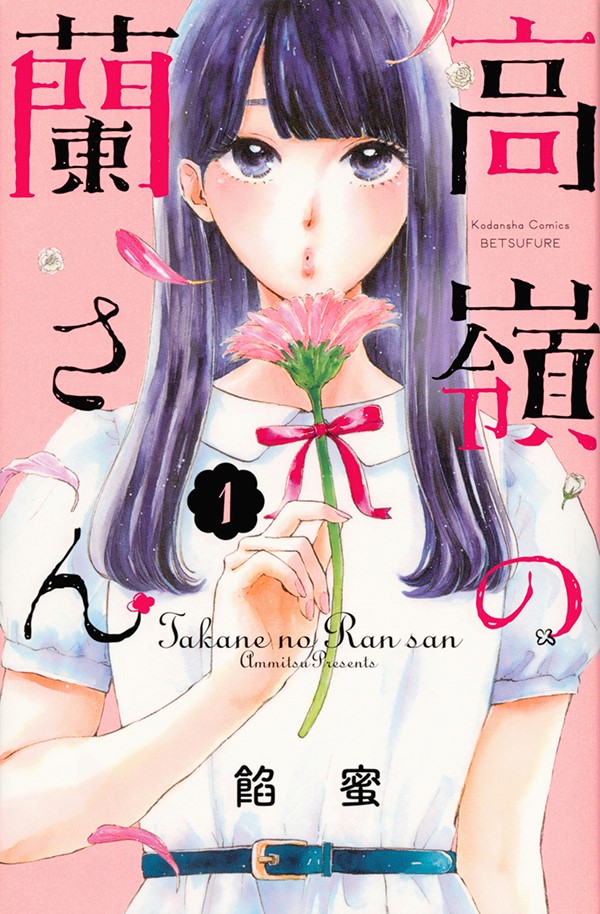
『高嶺の蘭さん』(餡蜜/講談社)
前田(デザート):今のを聞いていると、講談社の少女マンガの主人公はみんな健気なんだなと思います。
『デザート』の場合は、伝統的に都会的なモノにあこがれている郊外の女の子が「こうなりたい」「ああなりたい」という願望を表現している作品が多いんです。たとえば、『春待つ僕ら』のように「今の自分より、明日はもっと良い自分になっていたい」ってがんばっているヒロインが人気。
『デザート』の前身である『週刊少女フレンド』に掲載されていた『はいからさんが通る』の紅緒さんは、向上心溢れる前向きな女の子ですが、それがけっこううちの雑誌には流れているのかもしれません。
助宗:『はいからさん』はけっこう根本にありますね。恋愛だけではなく、他のこともがんばりたい欲が強い。
前田(デザート):男の子に「これでいいんだよ」って言われても物足りないんだなと感じます。「私ががんばったこれを認めてほしい」みたいな承認欲求は強い気がしますね。自立できていないところから読者と一緒に成長していくマンガももちろんあるし、スタートは様々ですけど。
欲しいものは愚痴のなかに隠れてる
前田(デザート):それを1番よく知っているのはマンガ家さんだと思うんです。描いている方が女の子ですから「あなたはほんとは何がしたいの?」「女の子って何が1番喜ぶと思う?」「あなたは1番なにを喜ぶの?」って打ち合わせで聞くことに一番力を入れています。「私今、1番褒められたいんです」「じゃあ、どんな男の子に、どんなところを褒められたいの?」という感じで。
水垣(別フレ):あんまり架空の読者を想定しても、作家さんもそんな器用には描けないと思うので、自分が描いていて楽しいとか、満たされることが大事なのかなと思います。
松原(なかよし):けっこう作家さんと担当の恋バナから発展したりしますよね。「こんな出来事があって」「それいいですね!」みたいな。
前田(デザート):話せば話すほど、その人たちの求めてるものって違う形で出てくるから、それが作家さんの個性になりますね。「たくさんの男の子に、すごく優しくされたいんです」って話から、逆ハーレムものができたりとか。もちろん作家さんの持ち味があるので、それとのマッチングは大切ですが。
助宗:欲望の把握って難しいですよね。ツラさのほうがよく耳に入ってくるから。電車やカフェで女子たちが「ああでこうでツラい」とか言っているし、ツイッターにも愚痴アカがありますよね。こういうのがツラいんだなっていうのはよく見る。で、それをどうしたいかはよくわからないから、愚痴ってるんだなと思うんです。
水垣(別フレ):愚痴の根源には「仕事ができて、甘いもの差し入れてくれるかっこいい上司がいたらいいのに」とか、具体的な欲望があるんじゃないでしょうか。そうは言わないけど、翻訳するとそういうことだよね、という。
松原(なかよし):だから「愚痴っても進まないから、こう考えてみたら?」って提案したくなる。思考を組み立てるのが苦手な子たちがずっと同じとこで悩んでいるのを見ると、心苦しいなあと思うんです。
助宗:偉そうになってしまいますが、愚痴の裏に隠れた欲望に「じゃあ、もっとこうしたらじゃない?」ってマンガで提案できたら、読んだ子は、救われるのかなと思います。
これからの少女マンガ
水垣(別フレ):『別フレ』は編集長がよく「欲望に忠実なマンガを作りなさい」と言っています。かっこいい男の子と恋したいとか、こんな良いことあったらいいなとか、作家さん自身が持ってる欲望を前面に出すこと。
欲望はなくならないから、そこにちょっとしたエッセンスで時代性が入ると、その時代らしい作品になるんだと思います。面白い作品のベースは変わらない。
前田(デザート):前の編集長が「世界中の女の子を喜ばせる」って宣言したんです。でもそれは言葉にしただけで、ずっとむかしから変わらず守られてきた根幹だと思うので、今いる女の子を喜ばせていくことをずっと続けていきたいです。
水垣(別フレ):女の子を喜ばせるマンガであればなんでも少女マンガだと思うんです。恋愛が10代にとって至上命題だとは思いますけど、過去には『ヤマトナデシコ七変化』とか、一対一の恋愛がメインではないマンガもありましたし。時代が多様化して、女の子の考えも多様化しているでしょうから、今の少女マンガはベタなものばっかりじゃなくておもしろいよって伝えていきたいですね。ドSもいればスパダリ(スーパーダーリン)もいるけど、そういうわかりやすいキャラだけじゃないですし。
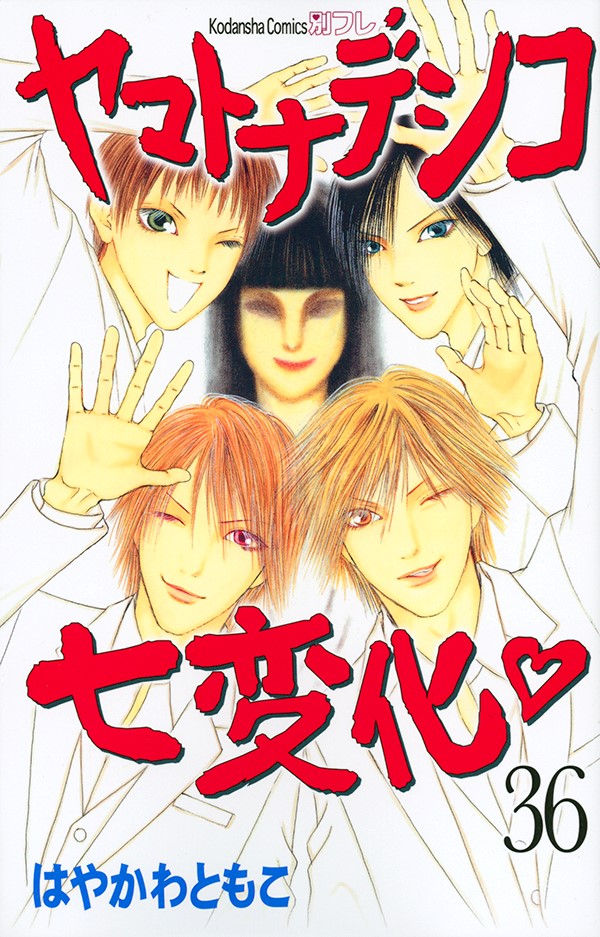
『ヤマトナデシコ七変化』(はやかわともこ/講談社)
前田(デザート):正直僕は学生時代、少女マンガって男にとっては悪魔の書だと思ってましたけどね。「こんな男になれっていうの? それは無理でしょ」って思ってた。けど、全然違いますよね。学びがいっぱいあるなっていうか。
助宗:男性にいわゆるイケメン像をやたらと押し付けてしまうのは少女マンガの悪芸という側面もありますが、「ヒロインになるとはどういうことか」を学ぶことのほうがすごく大事。
水垣(別フレ):決して男性の思う「女にとって都合のいい顔のいいイケメン」だけが載ってるわけではないですね。女の子を喜ばせるものを男性が読んで気持ちいいかは知らないですけど。
助宗:都合の良い世界に閉じこもって、狭いところに陥らないようにはしているつもりなんですよね。
前田(デザート):嘘はバレますね。女性の読者はだまされてくれないです。
女の子をヒロインにしてくれるのが「イケメン」
前田(デザート):難しい……。知りたいなー。
松原(なかよし):女の子をヒロインにできる男の子がイケメンだと思います。
一同:おおーー、それだ!
水垣(別フレ):お姫様にしてあげられること。
松原(なかよし):『なかよし』は読者全員をヒロインにすることが目的なので、ヒロイン扱いしてくれる男子。
一同:(拍手)
水垣(別フレ):とはいっても、何かしてほしいわけじゃない。「何にもしてくれない男」の場合もある。自分が輝くために、何もしない男が良いと思う人もいるかもしれないから。
助宗:「星は輝いてるだけでいい」みたいな。直接何かされたくない自尊心もありますね。
水垣(別フレ):「泣いている男の子を救いたい」みたいな人もいるわけじゃないですか。
ヒロインにしてくれるなら、イケメンじゃなくてもいいですもんね。
前田(デザート):ヒロインにしてくれる行為がイケてるってことですよね。
興味深いお話、ありがとうございました!
■講談社の少女マンガを読むなら「Palcy」
Palcyでは、『はいからさんが通る』など往年の名作から、『お嬢と番犬くん』など話題の新作まで配信中!
もちろん少女マンガ以外も!
9月12日からは『ミリオンジョー』が2週間全話解放されます。
Palcy限定のオリジナルコンテンツもあるので、ぜひチェックしてくださいね。

